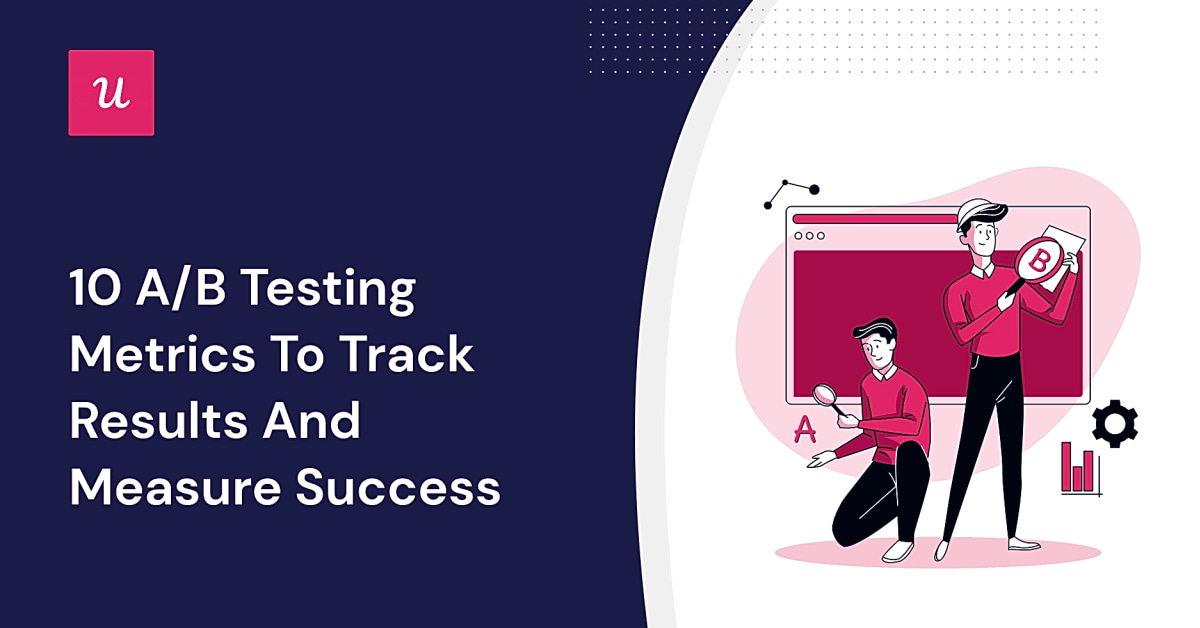When it comes to grabbing the attention of your audience and driving engagement, headlines are key. In today’s digital landscape, where information overload is a constant battle, it’s crucial to have headlines that stand out and entice readers to click through. This is where A/B testing comes in – a method of comparing two variations of a headline to see which one performs better. In this article, we’ll dive into the world of A/B testing for headlines and explore how you can use it to improve your engagement rates. From understanding the basics of A/B testing to implementing it in your own headline writing process, we’ll cover everything you need to know in order to create effective headlines that drive better engagement. Whether you’re a copywriter looking to up your game or a business owner wanting to boost your online presence, read on for our tips and tricks on A/B testing headlines for better engagement.
As an operational leader, it is crucial to constantly improve your skills and strategies to stay ahead in a competitive business environment. One powerful tool that can help you achieve this is A/B testing, specifically when it comes to crafting effective headlines. In this article, we will dive into the world of A/B testing for headlines and how it can greatly impact your engagement with readers.
To begin, let’s define what A/B testing is. A/B testing is a method of comparing two versions of something to determine which performs better. In the context of headlines, this means creating two different versions of a headline and measuring which one resonates more with your audience. It’s a great way to experiment and fine-tune your headline writing skills.
So why is A/B testing headlines important for operational leaders? As a leader, your role involves making critical decisions that can greatly impact your business. By A/B testing your headlines, you can gather valuable insights on what type of messaging resonates best with your audience, ultimately leading to better engagement and potential growth for your business.
Now that we understand the importance of A/B testing headlines for operational leaders, let’s dive into how to conduct an A/B test. The first step is to identify the goal of your test – whether it’s to increase click-through rates, conversions, or overall engagement. Next, create two versions of your headline, keeping in mind key elements such as length, tone, and keywords. Then, use a tool such as Google Optimize or Optimizely to set up and run your test. Make sure to track and analyze the results to determine which headline performed better.
When it comes to creating effective headlines, there are some best practices you should keep in mind. Firstly, make sure your headline is clear and concise, conveying the main message in a few words. Use power words and action verbs to evoke emotion and create a sense of urgency. Additionally, consider using numbers or statistics to make your headline more impactful.
Now, let’s take a look at some real-life examples of successful A/B testing for headlines. One example is the online retailer, Zappos, who A/B tested their homepage headline and saw a 6% increase in conversions. Another example is Buffer, who saw a 75% increase in click-through rates by A/B testing their blog post headlines.
Some may have doubts or concerns about A/B testing, such as the potential cost or time commitment. However, the benefits of A/B testing outweigh any potential drawbacks. It allows you to make data-driven decisions and continuously improve your messaging, ultimately leading to better engagement and results for your business.
Understanding the Power of A/B Testing for Headlines
As an operational leader, it is crucial to constantly improve your skills and strategies to stay ahead in a competitive business environment. This is where A/B testing for headlines comes into play. By testing different variations of your headlines, you can gain valuable insights into what resonates best with your audience and drives higher engagement.
In today’s fast-paced world, capturing the attention of readers is becoming increasingly difficult. With so much content available online, it is essential to have headlines that stand out and entice readers to click through. A/B testing allows you to experiment with different headline ideas and determine which ones are most effective in capturing your audience’s attention.
Furthermore, as an operational leader, it is your responsibility to ensure that your company’s content is performing at its best. By paying attention to A/B testing for headlines, you can optimize your content and drive better engagement with your readers. This not only benefits your company’s overall success but also showcases your strong leadership skills in constantly seeking ways to improve and stay ahead in the competitive business landscape.
Best Practices for Writing Effective Headlines
use HTML structure with A/B testing and headlines only for main keywords and
Effective headlines are crucial for engaging readers and capturing their attention. Here are some tips and techniques for crafting compelling headlines:
- Keep it concise and clear: Your headline should be short, to the point, and convey the main idea of your content. Avoid using too many words or complex language.
- Use numbers and statistics: Numbers and statistics can grab attention and make your headline more tangible. For example, ’10 Secrets to Increase Engagement with A/B Testing’.
- Create a sense of urgency: Phrases like ‘Limited time offer’ or ‘Don’t miss out’ can create a sense of urgency and encourage readers to click on your headline.
- Incorporate keywords: Use relevant keywords in your headline to improve its visibility in search engines.
- Test different variations: Just like with A/B testing, try out different versions of your headline to see which one performs the best.
do not use “newline character”
Step-by-Step Guide to Conducting A/B Testing
A/B testing, also known as split testing, is a method of comparing two versions of a webpage or marketing material to determine which one performs better in terms of engagement and conversions. This can be especially useful when it comes to headlines, as they are often the first thing a reader sees and can greatly impact their decision to continue reading.
So how do you set up and run an A/B test for headlines? Follow these steps:
Step 1: Define Your Goal
The first step is to determine what you want to achieve with your A/B test. Are you looking to increase click-through rates, decrease bounce rates, or improve overall engagement? Having a clear goal in mind will help guide your test and ensure you are tracking the right metrics.
Step 2: Create Your Variations
Next, create two versions of your headline – the original (A) and the variation (B). Make sure they are distinct enough to truly test their performance. This could include using different wording, lengths, or even different styles.
Step 3: Set Up Your Test
Using an A/B testing tool or software, set up your test by inputting the two versions of your headline and the desired metrics to track. You can also set the duration of the test and the percentage of traffic that will see each version.
Step 4: Run the Test
Once everything is set up, it’s time to run the test. The tool will randomly show each version to visitors and track their interactions. It’s important to let the test run for a long enough period to gather sufficient data.
Step 5: Analyze Results and Make Changes
After the test is complete, analyze the results and see which version performed better. If one version significantly outperforms the other, then it’s clear which headline resonates more with your audience. If there is no significant difference, then you may need to make further tweaks and run the test again.
A/B testing is a powerful tool that can help you fine-tune your headlines and improve engagement with your readers. By following these steps, you can set up and run effective A/B tests for your headlines and see a positive impact on your engagement and conversions.
Real-Life Examples of Successful A/B Testing
When it comes to A/B testing headlines, it’s always helpful to see real-life examples of businesses that have found success with this strategy. Let’s take a look at some case studies that demonstrate the power of A/B testing for crafting effective headlines.
One example is Company XYZ, a tech startup that was struggling to increase click-through rates on their email marketing campaigns. After implementing A/B testing for their subject lines, they saw a 20% increase in open rates and a 15% increase in click-through rates. By testing different variations of their headlines, they were able to identify the most engaging option and drive more traffic to their website.
Another success story comes from Company ABC, a retail company looking to boost engagement on their social media posts. By A/B testing their post headlines, they were able to increase likes and shares by 25% and attract a larger audience to their brand. This not only led to more sales, but also helped them connect with their customers on a deeper level.
These are just two examples of how A/B testing for headlines can have a significant impact on engagement and ultimately, business success. By continuously experimenting and refining your headline choices, you can see similar results and stay ahead in today’s competitive market.
In conclusion, A/B testing headlines is a valuable skill for operational leaders looking to enhance their leadership abilities and drive engagement with their audience. By following the tips and techniques outlined in this article, you can improve your headline writing skills and ultimately see better results for your business. Remember to constantly experiment and test different variations to find what works best for your specific audience. Happy testing!






